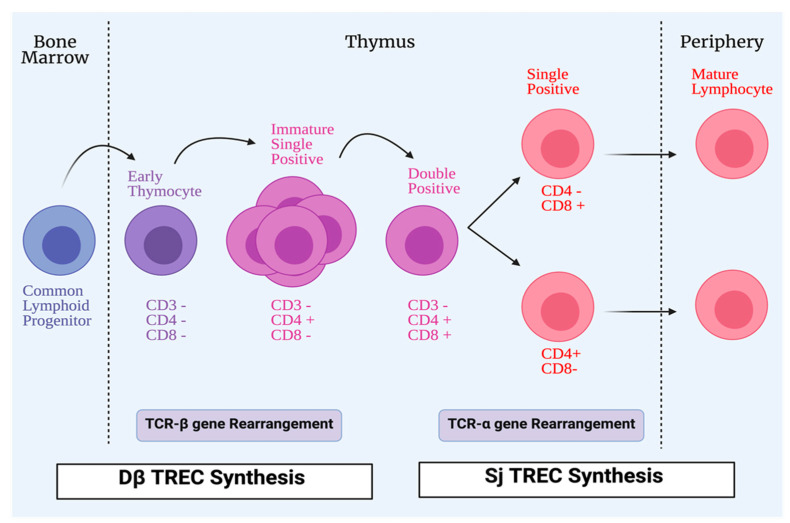Figure 2.
Process of T-cell maturation. All conventional T-cells start life as lymphoid progenitors, which migrate from the bone marrow to the thymus to initiate proliferation and maturation. In the thymus, early thymocytes lack the expression of CD4 and CD8 co-receptors that are involved in T-cells receptor (TCR) signaling. The TCR, which has two chains, is formed by a process of TCR-β gene rearrangement. Early thymocytes then develop CD4+CD8+ (double positive), and during that time the TCR-α chain develops. CD4+CD8+ (double positive) cells differentiate into single positive cells, either CD4+CD8- or CD4-CD8+ to be exported as mature lymphocytes from the thymus to the periphery. During TCR rearrangements, some DNA small circles are formed in T-cells during their passage in the thymus; they are called T-cell receptor excision circles (TRECs). Dβ TRECs are synthesized during TCR-β rearrangement, whereas sj TRECs are synthesized during TCR-α rearrangement.

